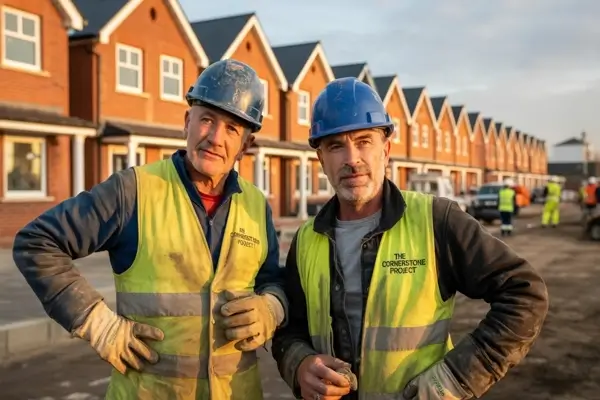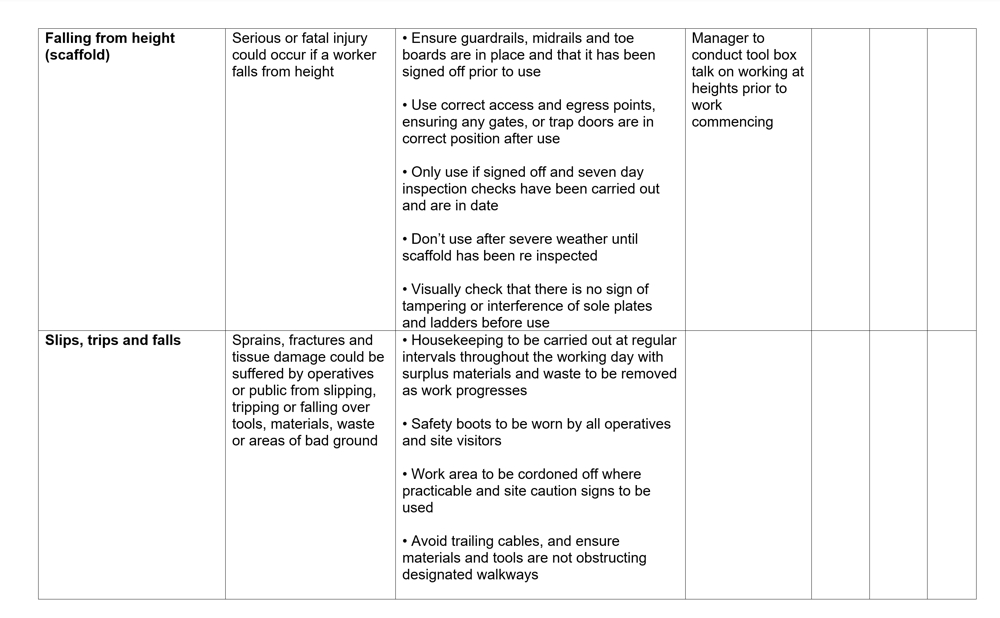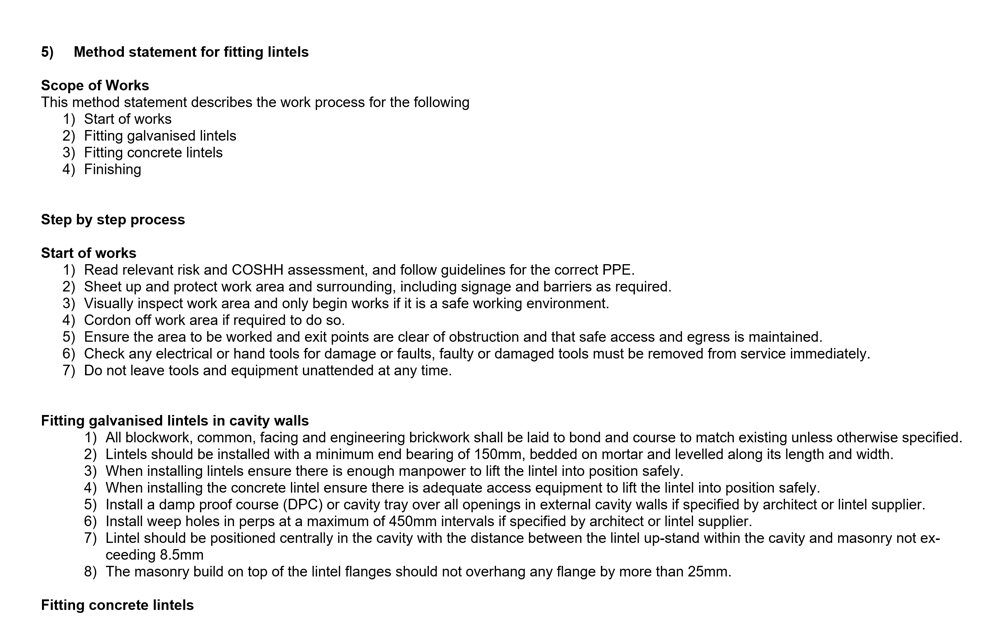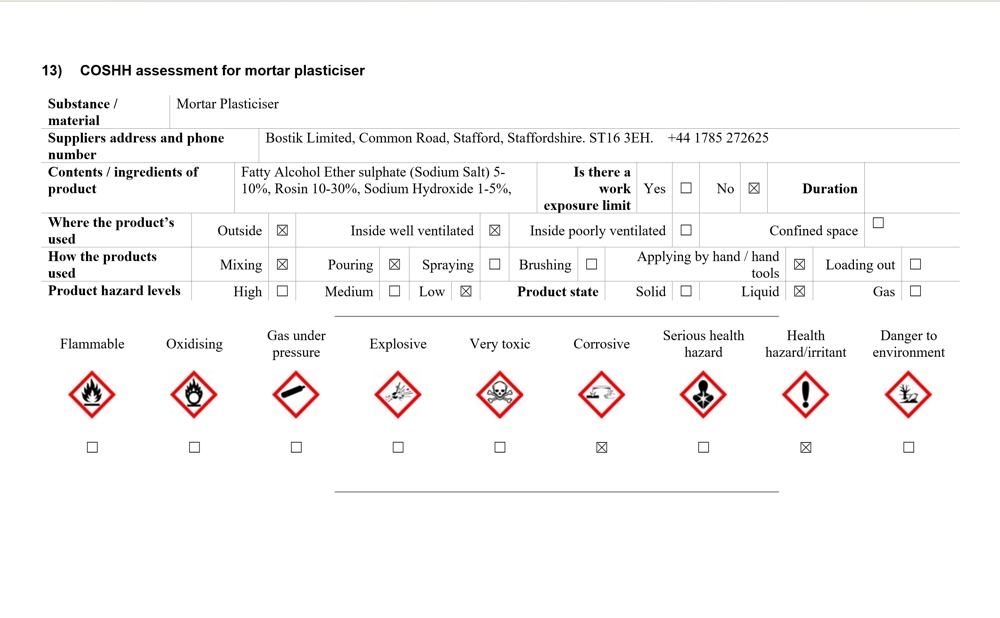Bricklayers health and safety RAMS pack. BEST OFFER

Building a wall, a house or an extension? These are the RAMs for you. A complete H&S package for just £65.00.
 |
 |
 |
|
Sample 1 |
Sample 2 |
Sample 3 |
Bricklayers, AKA brickies, are highly skilled tradespeople who specialise in constructing and repairing various structures, including walls, chimneys, and other architectural elements, using bricks, concrete blocks, and stone. Their expertise lies in the physical act of laying bricks and in understanding the underlying principles of structural integrity and design.
These craftsmen meticulously lay bricks in mortar, strategically trimming and cutting each piece to ensure a perfect fit. They are adept at aligning and waterproofing the constructions they build, which is crucial for durability and longevity. Bricklayers often create enduring structures, such as building foundations, load-bearing walls, and chimneys, each of which requires specific techniques to ensure stability and compliance with local building codes.
In their daily work, bricklayers pay great attention to detail, skillfully arranging bricks and other masonry units in precise patterns. They employ mortar—a mixture of cement, sand, and water—as a binding agent to cohesively unite these materials, resulting in a robust and lasting framework.
Equipped with an array of specialised tools—such as trowels, hammers, chisels, and jointers—bricklayers execute the fine details of their craft, including the creation of decorative patterns or custom shapes, which often necessitates cutting bricks to fit unique designs or when constructing curved walls. To ensure accuracy and integrity in their work, they perform critical measurements of work areas, carefully setting out the first rows of bricks or blocks as a foundation for the entire structure. They utilise precise tools like spirit levels and plumb lines to confirm that each layer is properly aligned and level, thus safeguarding against structural issues.
In addition to new construction, bricklayers are essential to restoring and refurbishing existing brickwork and stonework, particularly in heritage and restoration projects. They possess a deep understanding of historical masonry techniques and materials, allowing them to faithfully replicate original designs and ensure restored structures retain their historical significance.
Table of contents for bricklayers package:
Risk assessments for:
- 01) Brick and block work
- 02) Risk awareness for areas where asbestos could potentially be discovered
Method statements for:
- 03) Brick and block work
- 04) Cleaning brickwork
- 05) Fitting lintels
- 06) Pointing and re-pointing
- 07) Underpinning
COSHH assessments for:
- 08) Cement
- 09) Brick and patio cleaner - Acid
- 10) Brick and patio cleaner - Eco
- 11) Hydrated lime
- 12) Hydraulic lime
- 13) Mortar plasticiser
- 14) Mortar waterproofer
- 15) Petrol
This special package contains 15 documents meticulously curated by our experts based on their professional experience and our customers' download trends. By purchasing this package, you can access various materials to help you achieve the "Health & Safety Gold Standard Award" for your website. This prestigious award is a testament to your commitment to the highest standards of health and safety practices, and it will undoubtedly boost your reputation among clients, customers, and contractors alike.
Our bricklayers package is designed to provide you with up-to-date information on the latest trends and laws in health and safety. We continuously update our package to ensure that your Risk Assessments and Method Statements (RAMS) remain current and compliant with the latest regulations. With this package, you can be confident that you are always equipped with the most relevant and accurate information, allowing you to focus on your work with peace of mind.
Accidents caused by falls from height or objects falling from height are a persistent hazard in numerous sectors of the construction industry, and bricklaying is no exception. Other common risks in this industry include manual handling incidents and slips, trips, and falls co-occurring.
Products such as cement and lime pose risks of accidental injuries to eyes and skin and can cause long-term diseases from breathing in dust and long-term contact.
Hearing loss, eye and skin damage from objects being ejected from power tools, moving parts, and hand-arm vibration are all risks associated with power tools such as rotating saws and angle grinders.
Sunburn and skin damage from long-term sun exposure are risks that need consideration.
Value for money is a crucial element in all of our products, including our bricklayer H&S pack. It's professional, comprehensive, and reasonably priced. Moreover, it's designed for easy use, and all you need to do is add your company details to the cover page to get started. The document comes in a docx format, which can be edited in Word™ or any other processor. You can also add your logo and brand this document to match others within your company. Buying this document as a package saves you £70.00 on purchasing these documents individually.
This document is:
- Recognised by local authorities.
- Recognised by principal contractors.
- Suitable for CDM sites.
- Approved by H&S managers.
"Our customers' feedback serves as a testament to the value of our products."
Most companies now request the standard H&S documents included in this product and a company H&S policy if they employ five or more staff.
However, the list of additional documents that some principal contractors or CDM sites ask for can be far greater and include such things as staff training records, an anti-slavery policy, a lone worker policy, an equality and diversity policy, a waste management policy and more, depending on the principal contractor's request.
We’re often asked why we don’t include a company H&S policy within this document. This is because the H&S policy isn’t specific to the works you are tendering for. Instead, it lists your company's general approach to H&S, including who is responsible for what.
The construction industry has a higher rate of accidents and fatalities than many other industries. Due to this, it is essential to consider providing training for all staff in manual handling, asbestos awareness, working at height, and slips, trips, and falls. Online courses are readily available for these types of training, allowing staff to complete them on their preferred device at a time and location that suits them.
Job-specific training is equally essential and can be conducted in various ways, such as toolbox talks, handing out flyers, notices, risk and method statements, or a simple chat. Ignoring the importance of job-specific training can lead to severe consequences. For instance, if you promise a contract manager that your staff will perform a specific task in a certain way but fail to communicate it to your staff, it can result in disastrous outcomes.
GET THIS DOCUMENT
£65.00+VAT
- Available in Word™
- Fully customisable
- Add your Company Logo
- UK & EU Compliant

 CART
CART 